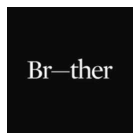Track the source and journey of every lead. Attribute each lead to its marketing channel. Feed accurate lead source data into your CRM to maximize marketing ROI.

⭐⭐⭐⭐⭐
LeadSources is a smart and well-built tool for anyone serious about understanding where their leads come from.
⭐⭐⭐⭐⭐
I can now double down on the sources that truly bring results. Highly recommended for founders, marketers, and anyone serious about growth!
⭐⭐⭐⭐⭐
Brings me closer to my Lead sources
Marketing teams use LeadSources to make smarter decisions




Enter your email, and we’ll send you a report showing all the data tracked about you (the same report LeadSources provides for each lead).
Track the source of your leads across multiple sessions. Attribute each lead to its marketing channel.
Every lead that submits your form is attributed to a rich profile of 9 comprehensive data points, giving your sales and marketing teams the granular data they need to make smarter decisions.
Record the complete path each lead takes across multiple sessions before conversion. From first ad click to final form submission, see every touchpoint that influenced their decision.
Connect LeadSources to your form with our simple 3-step process. No technical skills required.

Enter your website URL
Enter the URL of the website you want to track.

Install the tracking code
Copy and paste your LeadSources tracking code into the <head> section of your website.
Connect LeadSources to your form builder in seconds with our native API connections. Visualize the full source and journey of every lead in your dashboard.
Trusted by marketers, agencies, and founders who demand precise lead source tracking data
Prove ROI with precise attribution and optimize campaigns based on real customer journey
Deliver transparent reporting to clients with detailed lead source data and conversion paths.
Make data-driven decisions about your marketing spend and understand what truly drives growth.
Start your free trial today and see the complete picture of your customer journey
Automated page speed optimizations for fast site performance